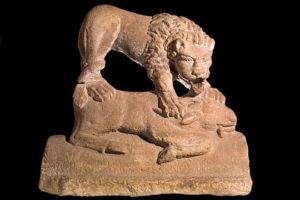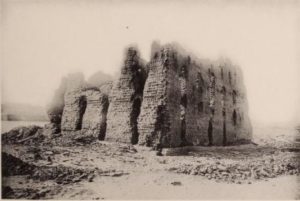Leonard Woolley’s most lasting fame came about from his work at the site of Ur, spanning the Jazz Age and into the 1930s. But prior to that, he had already made an impression as an archaeologist and World War I intelligence officer.
While a student at Oxford, it was determined that Woolley would become an archaeologist in a seemingly casual manner during a meeting with the Warden of his college, Dr. William A. Spooner (of spoonerism fame). After sewing him to his sheet, Spooner asked him what career path he had chosen. Woolley proposed that he would become a schoolmaster; Spooner replied, “well, Mr. Woolley, I have decided that you shall be an archaeologist.” (Woolley 1920:4)

And so it was. He began working at the Ashmolean Museum at Oxford in 1905 and was put in charge of his first excavation (at Corbridge, a Roman site in England) in 1906, even though he had never worked on a dig before. The following year, he left the Ashmolean to dig with Randall McIver for the University Museum of the University of Pennsylvania Expedition to Nubia, and later did some museum work for Aurel Stein.

In 1911, just past 30 years of age, he was suddenly in an enviable position: Stein wanted him to do more museum work on the Silk Road textiles he had collected, the Keeper of the Ashmolean Museum, D.G. Hogarth, wanted him to take over the excavations at Carchemish in Syria, and Lord Carnarvon wanted him to dig in the Valley of the Kings in Egypt. Woolley chose Carchemish, and Lord Carnarvon had to settle for Howard Carter.

Woolley, accompanied by T.E. Lawrence and the excavation foreman, Hamoudi, would dig at Carchemish for several years while also engaging in some light espionage on the side. Intrigue and Imperial arrogance were endemic – Woolley bragged about holding a gun to the head of a local governor in order to get approval to dig at the site, and he and Lawrence also schemed to purchase for their museum some Assyrian statues that had been excavated by German archaeologists and then stolen.

With the outbreak of World War I, Woolley officially joined British Military Intelligence in Egypt, eventually being put in charge of spy ships that transported secret agents. Woolley always had the ship’s chef prepare a good meal, in case it turned out to be the spy’s last one.
In August of 1916, Woolley’s ship hit a mine and sank. Woolley survived, but was captured and spent the next two years in Turkish P.O.W. camps. His duties in the prison camps included lecturing on ancient history and providing costuming for the skits the prisoners put on. After the war, he published his first popular book, Dead Towns and Living Men, and did some more archaeology at Amarna in Egypt. In 1922, he was offered the job of digging at the site of Ur in Iraq. He stepped off the train at Ur Junction in October 1922 and would spend the next twelve years excavating the site.
Selected References:
Winstone, H.V.F.
1990 Woolley of Ur. Secker and Warburg, London.
Woolley, C.L.
1920 Dead Towns and Living Men. Being Pages From An Antiquary’s Notebook. Jonathan Cape, London.